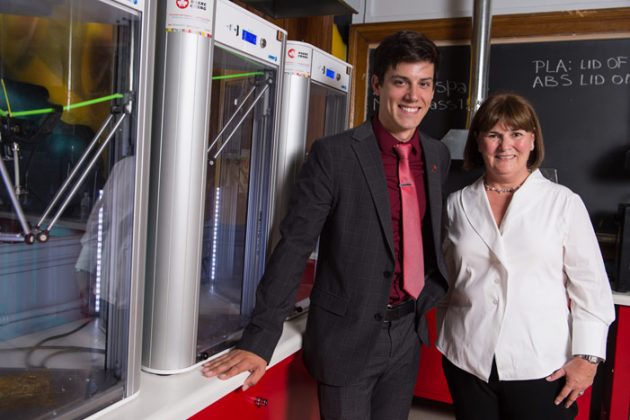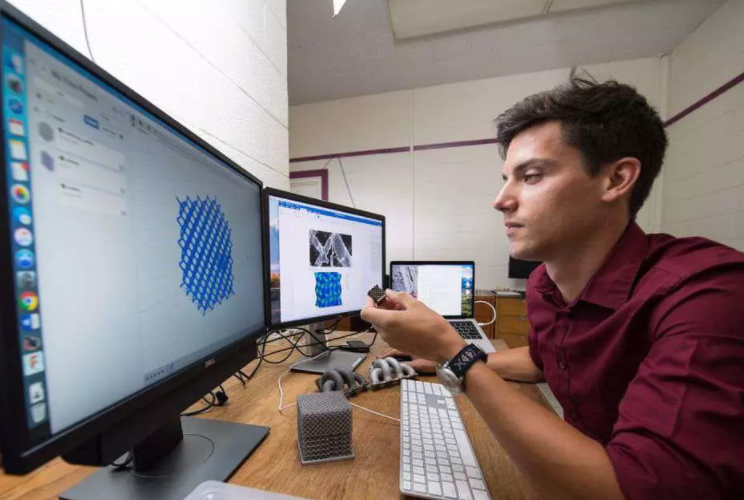New research from the University of New Brunswick in Canada seeks to pair artificial intelligence with 3D printing technologies for application to manufacturing.
Edward Cyr’s research, funded by a McCain postdoctoral fellowship, aims to develop an AI system that will approach a problem and 3D print its solution after considering all the alternatives.

Industry-enhanced artificial intelligence
Cyr is using his background in researching aluminium alloys at high temperatures to understand the behaviour and special properties of 3D printed materials. This has led to exploration of a metamaterial structure for the metal that increases in strength when under stress.
Cyr explains, “That would be would be useful for something like armour, perhaps, or maybe even building the wall of a ship. For impacts happening at higher speed, like an icebreaker, it would become stronger instead of more brittle.”

Through his work, he also hope to push the boundaries of computer aided design (CAD). In an interview with the Prince Edward Island Guardian, Cyr acknowledged that a human problem solver would only be able to come up with an optimal design after testing thousands upon thousands of ideas.
A computer, on the other hand, “can actually model a total design space and tell us which one is the best, and it can even come up with things we might not even think of.
Factories of the future
Prof. Mohsen Mohammadi, Cyr’s research supervisor at UNB’s Marine Additive Manufacturing Centre of Excellence, was confident that AI 3D printing would “revolutionise the whole manufacturing medium.” He also shares a belief that the technology could strengthen the local manufacturing sector contrary to a common perception that automation and artificial intelligence serve to replace human jobs.
The combination of AI and 3D printing has been explored with everything from conceptual space farms and deep-learning VR technology to fully functional robots and futuristic submarines. But the notion of an artificially intelligent form 3D printing its own solutions to problems is still in its infancy.
Follow future developments in 3D technology with our newsletter, via our Facebook page or on our Twitter.
Featured image: Cyr poses with a colleague next to a 3D metal printing machines after being awarded a McCain fellowship. Photo by Rob Blanchard, The Canadian Press

